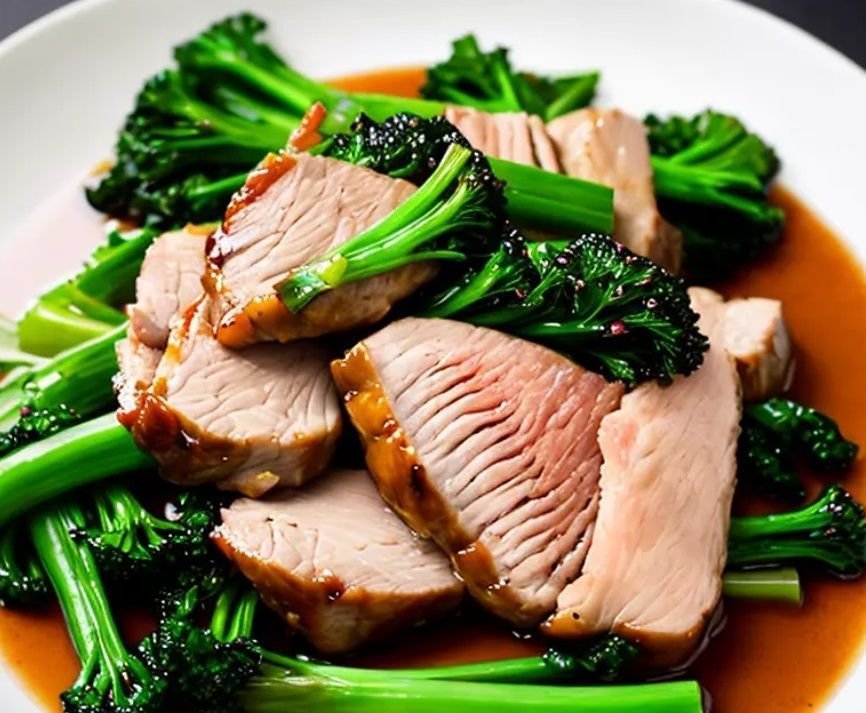Lion´s heart chinese recipes
Lion´s heart East China chinese recipes
Lion´s Heart Meatballs or Lion´s head (狮子头, Shīzi Tóu): A Classic Chinese Recipe. Asian food.
Lion’s Heart Meatballs, known as “Shīzi Tóu” in Mandarin, is a beloved classic in Chinese cuisine. This dish hails from the region of Huaiyang cuisine in East China and is characterized by large, tender meatballs served in a rich, savory sauce. The meatballs are named “Lion’s Head” due to their size and the way they resemble the head of a lion.
Ingredients for our Lion´s heart recipe:
Homemade chinese food.
For the Meatballs:
- 1 pound ground pork (a mixture of lean and fatty pork is preferred)
- 1/2 cup water chestnuts, finely chopped (for texture)
- 1/4 cup ginger, minced
- 2 cloves garlic, minced
- 2 tablespoons Shaoxing wine (Chinese rice wine)
- 2 tablespoons light soy sauce
- 1 tablespoon oyster sauce
- 1/2 teaspoon salt
- 1/4 teaspoon white pepper
- 1 large egg
- 2 tablespoons cornstarch
- 2 tablespoons vegetable oil
For the Sauce of our lion´s heart:
- 2 cups chicken or pork broth
- 2 tablespoons Shaoxing wine
- 1 tablespoon dark soy sauce
- 1 teaspoon sugar
- 1/2 teaspoon salt (adjust to taste)
- 1/4 teaspoon white pepper
- 1 teaspoon cornstarch (dissolved in 2 tablespoons of water)
For Cooking:
- 2-3 cups vegetable oil (for deep-frying)
- Napa cabbage leaves (for lining the serving dish)
Instructions of our lion´s heart:
Preparing the Meatballs:
- In a large mixing bowl, combine the ground pork, water chestnuts, minced ginger, minced garlic, Shaoxing wine, light soy sauce, oyster sauce, salt, white pepper, egg, and cornstarch. Mix the ingredients thoroughly until well combined.
- Shape the meat mixture into large meatballs, each about the size of a small fist.
- Heat vegetable oil in a wok or deep frying pan to about 350°F (175°C). Carefully slide the meatballs into the hot oil and deep-fry them until they are golden brown and cooked through, about 10-12 minutes. Remove and drain on paper towels.
Preparing the Sauce:
- In a separate saucepan, combine chicken or pork broth, Shaoxing wine, dark soy sauce, sugar, salt, and white pepper. Bring the mixture to a simmer.
- Stir in the cornstarch-water mixture to thicken the sauce. Adjust the salt and sugar to taste.
Assembly:
- Line a serving dish with Napa cabbage leaves to create a bed for the meatballs.
- Place the deep-fried meatballs on the cabbage leaves.
- Pour the sauce over the meatballs.
- Garnish with some minced scallions if desired.
Serving:
Lion’s Head Meatballs are typically served family-style, and they pair wonderfully with steamed rice. The tender and flavorful meatballs, combined with the savory sauce, create a satisfying and comforting dish that’s cherished in Chinese cuisine.
Enjoy this classic Chinese dish that brings together the rich culinary traditions of Huaiyang cuisine, and delight in the harmony of flavors and textures that make Lion’s Head Meatballs a true culinary treasure.

Chinese Cuisine: A World of Amazing and Delicious Asian Recipes
Chinese cuisine is a diverse and vibrant tapestry of flavors, ingredients, and culinary traditions that have captivated palates all around the world. From the bustling streets of Beijing to the neighborhoods of New York City, Chinese food is celebrated for its incredible diversity, bold flavors, and rich history. In this article, we will explore the global impact of Chinese cuisine and introduce you to some amazing and delicious Asian recipes inspired by Chinese culinary traditions.
I. The Global Reach of Chinese Cuisine:
Chinese cuisine has made its way to every corner of the globe, with restaurants, takeout joints, and home cooks bringing the flavors of China to countless tables. Its widespread popularity is due to several factors:
- Diversity: Chinese cuisine is incredibly diverse, with regional specialties that cater to various tastes. From the fiery dishes of Sichuan to the delicate dim sum of Guangdong, there’s something for everyone.
- Flavor Profiles: The balance of flavors in Chinese cuisine—sweet, sour, bitter, salty, and umami—creates a rich and satisfying dining experience that resonates with people worldwide.
- Versatility: Chinese ingredients, from noodles to soy sauce, are versatile and can be adapted to various global culinary traditions.
- Health Benefits: Many Chinese dishes feature fresh vegetables, lean proteins, and healthful cooking techniques, making them a popular choice for those seeking nutritious meals.

II. Delicious Asian Recipes Inspired by Chinese Cuisine:
Here are some amazing Asian recipes that draw inspiration from the rich tapestry of Chinese culinary traditions:
1. Kung Pao Chicken:
A stir-fry dish from Sichuan province, Kung Pao Chicken is a delightful combination of tender chicken, crunchy peanuts, and a spicy, savory sauce. Szechuan peppercorns provide a unique numbing sensation.
2. Thai Green Curry:
Influenced by Chinese and Indian cuisines, Thai green curry is a fragrant and spicy dish made with green curry paste, coconut milk, and a variety of fresh herbs and vegetables.
3. Japanese Gyoza:
Gyoza, or Japanese dumplings, were inspired by Chinese potstickers. They are typically filled with a mixture of ground pork, cabbage, garlic, and ginger, then pan-fried to perfection.
4. Korean Jjajangmyeon:
A Korean-Chinese fusion dish, Jjajangmyeon features thick wheat noodles topped with a savory black bean sauce, diced pork, and various vegetables.
5. Vietnamese Pho:
Vietnam’s beloved pho, a flavorful noodle soup, was influenced by Chinese noodle dishes. It’s typically made with aromatic broth, rice noodles, and a variety of herbs and proteins.
6. Singaporean Hainanese Chicken Rice:
This dish features tender, poached chicken served with fragrant rice and a trio of dipping sauces. It was inspired by a Chinese dish from Hainan province.
7. Malaysian Char Kway Teow:
Char Kway Teow is a popular Malaysian stir-fried noodle dish featuring flat rice noodles, prawns, Chinese lap cheong sausage, eggs, and bean sprouts.
8. Filipino Pancit Canton:
This Filipino noodle dish draws inspiration from Chinese chow mein. It typically includes stir-fried egg noodles, a variety of vegetables, and a choice of protein.
III. The Influence of Chinese Ingredients:
Chinese ingredients have also made their way into global cuisine:
- Soy Sauce: Soy sauce, both light and dark, is a ubiquitous condiment and seasoning in many global kitchens.
- Sesame Oil: The rich, nutty aroma of sesame oil is a favorite for dressing salads, stir-fries, and more.
- Ginger and Garlic: These aromatic ingredients have found their way into various cuisines worldwide, adding depth and flavor to countless dishes.
- Noodles: Chinese noodles have influenced dishes like Italian pasta, Japanese ramen, and Vietnamese pho.

IV. The Culinary Bridge:
Chinese cuisine acts as a culinary bridge that connects cultures and communities around the world. Its ability to adapt and evolve, while maintaining its core principles, ensures its continued appeal to people from diverse backgrounds.
V. Conclusion: A World of Flavor:
Chinese cuisine’s global reach is a testament to the universal appeal of its flavors and techniques. From sweet and sour dishes to spicy Szechuan delicacies, Chinese cuisine continues to inspire and influence kitchens worldwide.
It’s a testament to the enduring power of food to bring people together, delight the senses, and create lasting memories. So, whether you’re savoring a bowl of Thai green curry or enjoying a plate of Korean Jjajangmyeon, you’re partaking in the rich and ever-evolving story of Chinese cuisine’s global journey.

Chinese Homemade Pork Broth: A Flavorful Base for Culinary Creativity
Homemade pork broth, known as “Pai Gu Tang” (排骨汤) in Mandarin, is a fundamental element in Chinese cuisine. It serves as a versatile foundation for a wide array of dishes, from comforting soups to savory sauces and flavorful braises. In this article, we’ll explore the art of crafting Chinese homemade pork broth, revealing the steps and secrets to creating a rich and aromatic culinary base that’s an essential component of many Chinese recipes.
I. The Significance of Pork Broth in Chinese Cuisine:
Pork broth is highly esteemed in Chinese culinary traditions for several reasons:
- Flavor Enhancement: It adds depth and umami to various dishes, elevating their overall taste.
- Nutritional Benefits: Pork broth is known for its collagen content, which contributes to the broth’s richness and offers potential health benefits for the skin and joints.
- Versatility: Pork broth serves as the foundation for an array of Chinese dishes, including noodle soups, hot pots, and braised dishes.
- Cultural Significance: Crafting homemade pork broth is a culinary tradition passed down through generations in Chinese families, making it a meaningful and cherished practice.
II. Ingredients for Homemade Pork Broth:
To prepare Chinese homemade pork broth, you’ll need the following ingredients:
- Pork Bones: Typically, you’ll use a combination of pork bones, such as ribs, spareribs, or pork neck bones. These bones are rich in flavor and collagen, which will help create a luscious broth.
- Water: Use clean, cold water to cover the bones in your pot.
- Aromatics: Aromatic ingredients like ginger slices and scallions are often added to enhance the flavor of the broth.
- Optional Additions: You can customize your broth with other ingredients such as garlic, star anise, and dried shiitake mushrooms for added depth.
III. Steps to Create Homemade Pork Broth:
Follow these steps to craft a flavorful pork broth:
- Blanch the Bones: Start by blanching the pork bones. Place them in a large pot, cover with water, and bring it to a boil. Allow it to boil for a few minutes, then drain the bones and rinse them thoroughly. This helps remove impurities and results in a cleaner, clearer broth.
- Simmer: Return the blanched bones to the pot, add fresh cold water, and bring it to a simmer. Allow the broth to simmer gently over low heat.
- Skim Impurities: As the broth simmers, you’ll notice impurities and foam rising to the surface. Skim them off regularly with a fine mesh skimmer to ensure a clear and clean broth.
- Add Aromatics: After the initial skimming, add ginger slices, scallions, and any optional aromatic ingredients to infuse the broth with flavor. Continue simmering.
- Simmer for Hours: Allow the broth to simmer for several hours. The longer you simmer, the richer and more flavorful the broth will become. It’s common to simmer for at least 3-4 hours, but some recipes call for much longer simmering times.
- Strain and Store: Once the broth reaches your desired flavor and richness, strain it to remove all solids. You’re left with a clear, aromatic pork broth ready to use in your recipes.
IV. Uses for Homemade Pork Broth:
Homemade pork broth is incredibly versatile and can be used in various Chinese dishes, including:
- Noodle Soups: It forms the base for classics like wonton soup and ramen.
- Hot Pots: As the simmering liquid for hot pot dishes where diners cook their own ingredients.
- Braised Dishes: For rich and savory braises like red-braised pork (Hong Shao Rou).
- Sauces: As an essential component of savory sauces used in dishes like Mapo Tofu.
- Cooking Rice: Use pork broth to cook rice for added flavor.
V. Conclusion: A Taste of Tradition
Homemade pork broth is the backbone of countless Chinese dishes, and crafting it at home is a time-honored tradition that connects families to their culinary heritage.
The rich, aromatic, and flavorful qualities of this broth serve as a testament to the depth and complexity of Chinese cuisine. Whether you’re preparing a comforting noodle soup or an exquisite braised dish, Chinese homemade pork broth is the secret ingredient that adds depth, umami, and a touch of tradition to your cooking.



